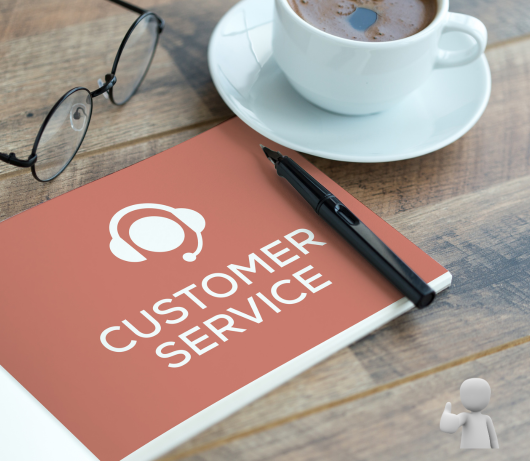Maximizing ROI With HubSpot Service Hub: Best Practices for 2025
Ever had a disappointing customer experience? Maybe you approached an employee at a department store who seemed too busy or uninterested to truly hear you out. It’s an all-too-common scenario many of us have faced. These interactions tend to stick with us, leaving a negative impression—and more often than not, they discourage us from returning.
Similarly, for online businesses these days, high quality customer support is critical for building healthy client relations as well as for driving growth. According to Zendesk's 2025 Customer Service Trends Report, 73% of consumers will switch to a competitor after multiple bad experiences, and more than half will leave after just one negative encounter. Considering this, providing a consistently positive customer experience is crucial for client retention and consequently for maximizing ROI.
In the last blog we talked about onboarding new customers using the Service Hub. In this article we’ll dive into how to maintain these customers using Hubspot by highlighting the best practices for facilitating proactive customer engagement and creating experiences that enhance customer satisfaction.
1- Streamline Customer Support with Automation
Customer support agents play a pivotal role in ensuring every client feels valued and understood, creating a positive and personalized experience with each interaction. By automating some of the more basic customer support actions, you enable your team to prioritize their more important work.
Some of the key features of automated customer support in Service Hub include ticket routing, ticket automation, conversation automation, and automated feedback.
Ticket Routing:
Automatically directs incoming support tickets to the appropriate team or agent based on predefined criteria such as issue type, customer tier, language, skills, availability or even work hours. This ensures tickets are promptly assigned to the most qualified individual, minimizing delays caused by manual sorting and reducing administrative workload.
Ticket Automation:
Streamlines the ticketing process by automating tasks such as follow-ups, escalations, and status updates. For instance, if a ticket remains unresolved for a specific period, it can be escalated to a manager or reassigned to another team. This automation ensures that no ticket is overlooked, maintaining a smooth and efficient workflow.
Conversation Automation:
Utilizes chatbots and pre-written responses to address common customer queries or gather essential information before escalating to a live agent. This feature delivers instant answers to frequently asked questions, such as operating hours or pricing details, enabling customers to get quick resolutions without waiting for human intervention.
Automated Feedback Collection:
Automatically distributes surveys like CSAT or NPS to customers after interactions to collect real-time feedback on their experience. This eliminates the need for manual follow-ups, streamlining the feedback collection process while providing actionable insights to improve service quality.
2- Empower Customers With a Knowledge Base for Self-Service
Much time and effort can be saved by providing customers with a library of knowledge they can access themselves to get answers for simple queries. No matter the size of your business, by providing easy access to articles, FAQs, and step-by-step guides, you enable customers to find solutions to common problems at their convenience and resolve simple issues independently, reducing their reliance on support teams.
Hubspot customer success platform lets you set up a knowledge base where you can create help articles, organize them into categories and subcategories, and tag them with relevant search terms. Moreover, there’s a feature that allows you to turn frequently asked support questions into help articles for customers. This feature enables you to create multiple knowledge bases and supports language variations for global reach.
Customize the look and feel of your knowledge base using HubSpot’s CMS editor to match your brand, and preview how they look on different devices. Another awesome feature is HubSpot’s Smart CRM that automatically records which articles customers have viewed, so your team will avoid sending customers the same content they’ve viewed.
3- Scale Customer Support With Breeze, an AI-Powered Expert
Breeze, Hubspot’s AI, provides comprehensive solutions for marketing, sales and service teams by including Copilot, agents, intelligence, and other AI features.
Use Breeze customer agent to engage with customers on your website at any time and provide instant answers. This way your service team can enhance efficiency and provide support around the clock. Many of the issues will get resolved before even reaching a human agent, reducing support ticket volume and empowering your team to give proper attention to the more serious issues.
The best part is that you can train your AI agent quickly using your knowledge base articles, URLs, help sites, and blogs to deliver accurate and personalized responses to common customer issues. Breeze can also assist with generating insights, improving content quality, or even identifying what topics should be covered based on customer behavior and inquiries.
4- Get Reports and Analytics With Metrics for Improvement
HubSpot's Service Hub offers reporting tools that enable businesses to monitor and enhance their customer service performance by tracking key metrics such as ticket response times, resolution rates, and customer satisfaction scores. The Service Analytics feature provides customizable, pre-built reports that offer insights, thus allowing teams to identify bottlenecks and implement strategies to improve efficiency. Here are just a few of the reports and metrics you can access:
Team Performance
-
Average time to close ticket: Measures the length of time between when a ticket is created and when its ticket status is set to “Closed”.
-
Chat wait time: Tracks the length of time between when a customer starts a chat and when they receive an initial response from a support representative.
Ticket replies
- Customer wait time: tells you which of your customers are waiting the longest on average to receive a reply from your service team in the help desk.
-
Owner reply count: provides a view of the total number of messages your support team sent to customers in the help desk. Use this information to see who is interacting the most with your customers in a given time frame.
Planning
-
Working hours availability: view the total amount of time reps are available in and outside of their set user working hours. Use this information to understand if members of your team are working outside of their typical hours.
-
Maximum available rep: see the maximum number of reps that were available to action support cases over the course of the day. View how your team's availability changes throughout the day and if reps are there during peak times.
-
Rep availability: gain visibility into how your reps are spending their time by viewing their total availability. Look at this data at the top level or drill down further to see more detailed statuses. This can help you to assess and manage the workload across your team.
The Service Hub provides you with a rich set of analytics and metrics. You can use this comprehensive data to empower your customer success team to refine their strategies and aim for reduced response times, greater efficiency, and higher customer satisfaction.
5- Utilize Customer Health Scores
A customer health score is a metric that evaluates the overall well-being of a customer’s relationship with a business. It takes into account various factors such as product usage, engagement levels, support interactions, and feedback to determine whether a customer is satisfied and likely to remain loyal, or at risk of churning.
In HubSpot customer management platform, you can combine signals from multiple sources in one place to build a more holistic view of your customer.
Customer health score metrics vary by industry, and how you calculate them for your company will depend on the customer behavior metrics that you find most valuable.
Common metrics used to inform customer health score include:
- Product usage
- Customer feedback
- Marketing engagement
- Website activity
- Customer support cases
- Product upgrades and renewals
- Community participation
Since not all metrics should contribute equally to your view of customer health, you can assign weightings to each metric based on how predictive it is (e.g., a metric like Product Usage may have more weight than Website Activity).
6- Integrate Service Hub With Sales and Marketing
The Service Hub works seamlessly with HubSpot’s Sales and Marketing tools to create a unified customer experience, enabling smoother handoffs, better cross-department collaboration, and improved retention rates.
When you combine HubSpot Service Hub with Sales and Marketing Hubs you create a single multi-purpose platform that your entire team can use, ensuring a cohesive customer experience across all touchpoints. Integrating these tools means service teams gain valuable insights into customer history, such as past interactions, purchase history, and ongoing deals, allowing them to provide more personalized support.
Furthermore, when a prospect turns into a client, you can ensure the onboarding experience is smooth and efficient, as the customer seamlessly passes through the platform from the Sales Hub to Service Hub.
To Conclude…
By strategically leveraging HubSpot Service Hub's capabilities, businesses can transform customer success from a cost operation into a strategic growth engine. In 2025, the key differentiator won't just be solving customer problems, but creating proactive, personalized experiences that turn support interactions into opportunities for deeper engagement and loyalty. As customer expectations continue to evolve, businesses that view service not as a reactive function but as a critical touchpoint for building lasting relationships, will gain a significant competitive advantage.



